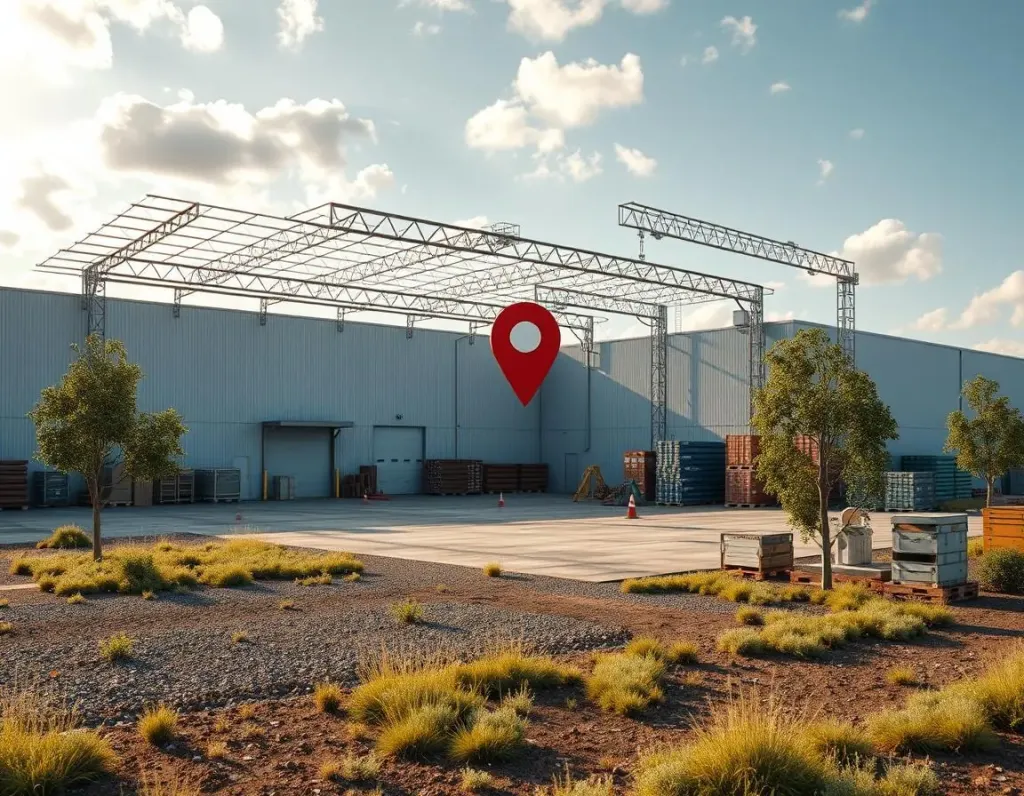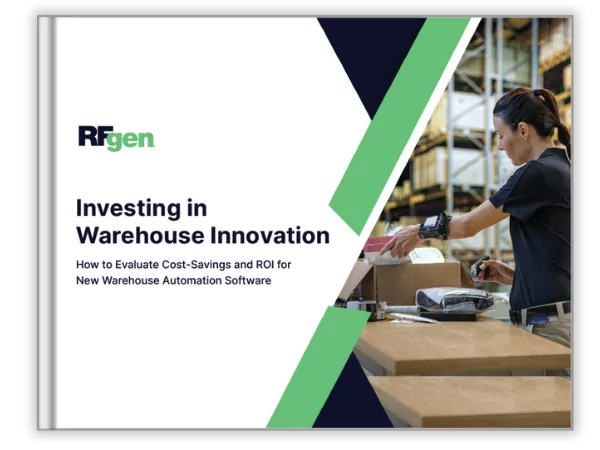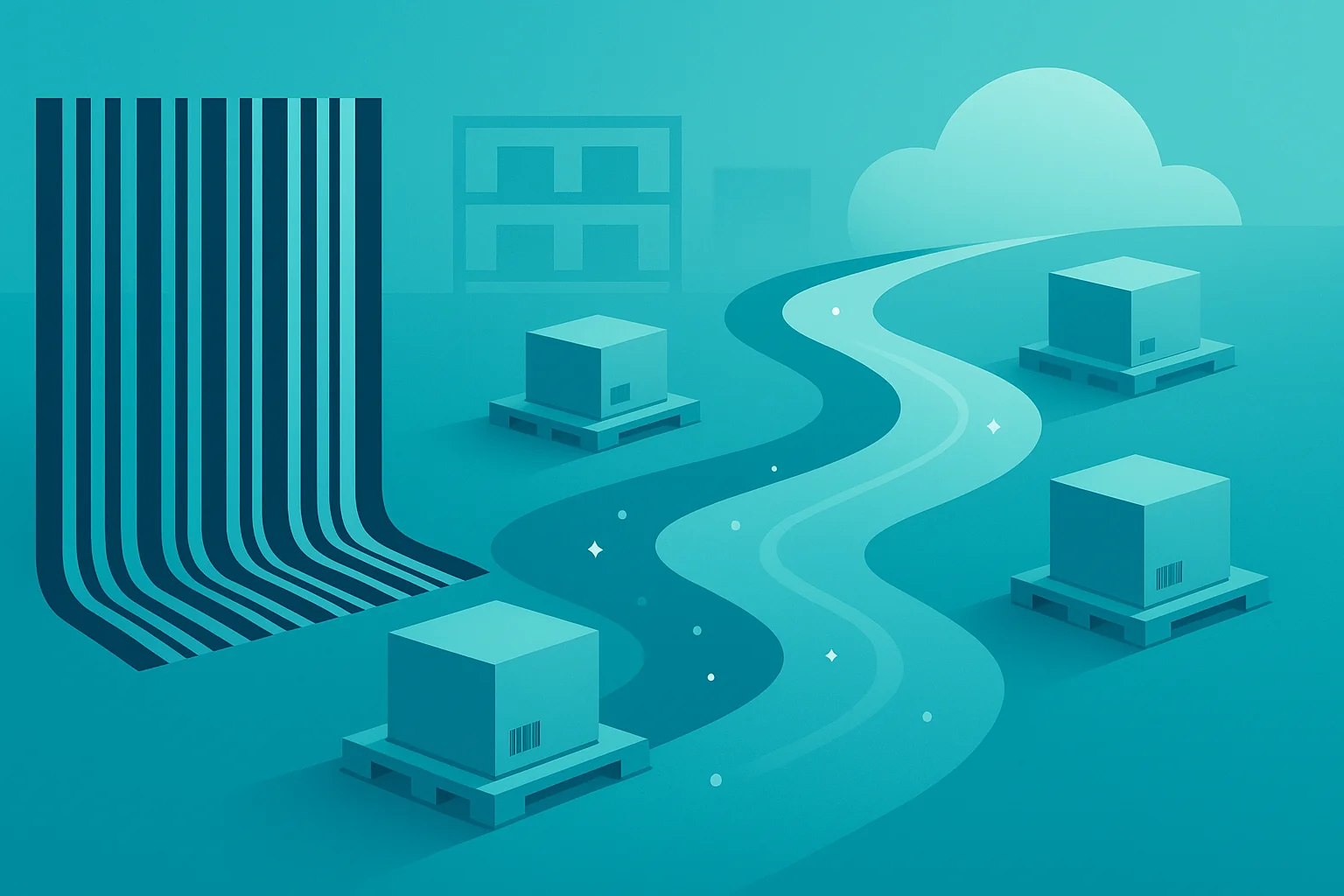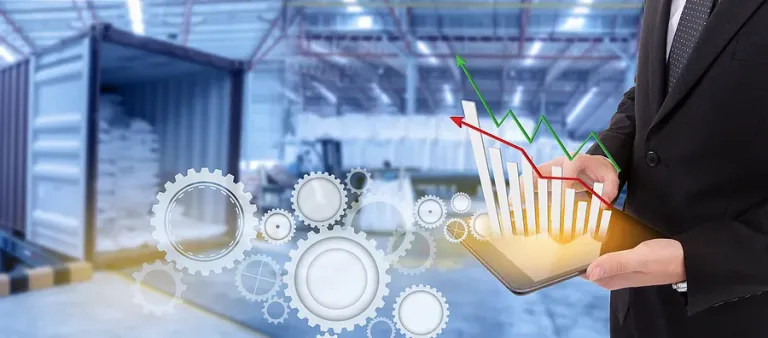
Beyond the Warehouse Walls: Managing Inventory in Large Exterior Spaces with Geolocation
How can businesses keep up with ever-growing customer demands? What technologies are transforming warehouse operations into models of efficiency and precision? One answer lies in geolocation. As companies strive for seamless and effective warehouse management, geolocation technology emerges as a game-changer, driving unparalleled levels of efficiency, accuracy, and optimization. Let’s explore how this innovative technology is revolutionizing modern warehouse management and shaping the future of logistics.
Geolocation technology, which enables the precise positioning and tracking of assets within a defined space, has revolutionized the logistics and supply chain management sectors. By integrating geolocation into mobile warehouse automation software, businesses can achieve unparalleled levels of efficiency, accuracy, and optimization. This article delves into the multifaceted role of geolocation in modern warehouse optimization, exploring its benefits, applications, and future potential.
1. Understanding Geolocation Technology
Geolocation technology refers to the use of various systems to determine the precise physical location of objects, people, or assets within a designated area. In warehouse management, this typically involves the following technologies:
- GPS (Global Positioning System): Uses satellite signals to provide location data.
- RFID (Radio Frequency Identification): Uses electromagnetic fields to automatically identify and track tags attached to objects.
- Bluetooth: Employs short-range communication to exchange data over short distances..
These technologies work together to provide real-time data on the location and movement of inventory within a warehouse, enabling better management and operational efficiency.
2. The Expanding Role of Geolocation in the Yard
In today’s expansive and high-demand logistics operations, the yard functions as an extension of the warehouse. Many companies have begun leveraging the yard as additional storage space to accommodate growing needs. Keeping track of materials in large outdoor areas can be a significant challenge, often leading to wasted time and lost resources. Businesses are increasingly turning toward technology like Geolocation Tracking to effortlessly manage yard inventory, ensuring that everything is precisely where it needs to be. This advanced feature not only reduces the time spent searching for materials but also keeps operations running at peak efficiency, helping businesses maintain smooth and streamlined workflows.
The Power of Geolocation in Outdoor Inventory Tracking
By integrating geolocation technologies like GPS with a mobile inventory solution businesses can leverage visual maps of their storage spaces that bring significant benefits:
- Real-time Visibility: Knowing the exact location and status of inventory in the yard at all times.
- Optimized Storage & Stock Levels: Efficiently monitoring to the outdoors while maintaining a single source of truth for your data.
- Reduced Costs: Eliminating overhead costs associated with misplaced items, disorganized storage, and inadequate tracking.
3. Benefits of Geolocation in Warehouse Management
Geolocation technology offers numerous advantages that significantly enhance warehouse management. These benefits include improved space utilization, operational efficiency, and inventory accuracy.
- Enhanced Space Utilization:
- Optimizes the physical layout of the warehouse.
- Maximizes storage capacity by efficiently using available space.
- Improved Operational Efficiency:
- Reduces the time needed to locate and retrieve items.
- Streamlines the picking and packing process, speeding up order fulfillment
- Increased Inventory Accuracy:
- Provides real-time tracking of inventory levels and locations.
- Minimizes errors in stock counts, reducing discrepancies.
By leveraging these benefits, businesses can reduce operational costs, improve customer satisfaction, and maintain a competitive edge in the market.
4. Geolocation and Space Optimization
One of the major roles of geolocation in modern warehouse management is space optimization. Businesses strive for maximal use of the available warehouse space to lower operational costs and increase storage capacity. To achieve this, understanding the physical layout of the warehouse is vital, and this is where geolocation steps in.
Using geolocation technologies, warehouses can map the entire layout, assigning specific coordinates to each product. This allows for an accurate representation of the warehouse space, highlighting the available and utilized areas. Consequently, users can quickly redesign their warehouse setup, achieving up to 14% more storage capacity. This is particularly beneficial to companies looking to maximize their asset utilization.
Benefits of space optimization through geolocation include:
- Increased Storage Capacity: Better organization leads to more space for storing goods.
- Cost Reduction: Efficient use of space reduces the need for additional storage facilities.
- Improved Access: Strategically placed goods enhance accessibility, speeding up the retrieval process.
By implementing these strategies, businesses can make the most of their available space, ensuring that every square foot is used effectively.
5. Enhancing Operational Efficiency
By integrating geolocation into mobile warehouse automation software quick and accurate order fulfillment is now not just a competitive advantage but a necessity in the logistics business. Geolocation helps businesses achieve this by enabling precise tracking of products in real-time.
Warehouse staff can work more efficiently using geolocation systems. These systems guide staff directly to the exact location of an item in the warehouse, eliminating the time wasted searching for items, especially in large outdoor spaces. This also makes the process of inventory auditing more efficient, as the exact location and quantity of each item are documented, saving significant resources that would otherwise be spent on manual stock-taking.
Operational efficiency improvements with geolocation:
- Reduced Search Time: Staff can quickly locate items, reducing delays.
- Streamlined Processes: Automated tracking simplifies inventory management and order fulfillment.
- Enhanced Accuracy: Real-time data ensures precise stock counts and reduces human error.
These enhancements lead to faster order processing times, improved accuracy, and overall better performance in warehouse operations.
6. Real-Time Inventory Management
Real-time inventory management is crucial for maintaining optimal stock levels and ensuring timely order fulfillment. Geolocation technology plays a pivotal role in achieving this by providing continuous updates on the location and status of inventory.
With geolocation, businesses can monitor stock levels and movement accurately. This helps in reducing stockouts and overstock situations by maintaining an optimal balance. Integration with a mobile inventory management solution further enhances this capability, allowing for automated reordering and efficient stock rotation.
Key benefits of real-time inventory management include:
- Accurate stock levels: Continuous tracking ensures up-to-date inventory data.
- Reduced stockouts: Timely replenishment prevents stock shortages.
- Optimized stock rotation: Automated systems ensure that older stock is used first, reducing waste.
By implementing real-time inventory management, businesses can improve their overall supply chain efficiency and better meet customer demands.
7. Geolocation in Logistics and Supply Chain
Beyond the warehouse, geolocation plays a significant role in logistics and supply chain management. It assists in route optimization for the delivery of goods and provides real-time shipment tracking, enhancing overall efficiency and customer satisfaction.
- Route Optimization:
- Analyzes real-time traffic data and geographic locations.
- Optimizes delivery routes for time and cost efficiency.
- Real-Time Shipment Tracking:
- Provides continuous updates on the location of shipments.
- Enhances transparency and trust with customers.
- Improved Customer Satisfaction:
- Ensures timely delivery of goods.
- Allows customers to track their orders in real-time, reducing uncertainty.
Geolocation technology enables logistics companies to streamline their operations, reduce transit times, and improve delivery accuracy. This not only boosts efficiency but also fosters stronger relationships with customers by providing reliable and timely services.A surprising number of companies are unable to track their inventory effectively. Download this insightful supply chain guide to learn how total inventory tracking can transform your business.
8. Challenges and Considerations
Despite the numerous benefits, implementing geolocation technology in warehouse management comes with its own set of challenges and considerations.
- Initial setup and maintenance costs: High upfront costs for hardware and software installation can be a barrier for some businesses.
- Data privacy and security concerns: Ensuring the security of sensitive location data is crucial to prevent breaches and maintain trust.
- Integration with existing systems: Seamlessly integrating geolocation technology with current warehouse management systems can be complex and requires careful planning.
Addressing these challenges involves investing in reliable technology solutions, ensuring robust data security measures, and planning for seamless integration to fully realize the benefits of geolocation in warehouse management.
9. Future Trends and Innovations
The future of geolocation technology in warehouse management looks promising, with several emerging trends and innovations on the horizon, including:
- Enhanced Integration with IoT: The Internet of Things (IoT) will further enhance geolocation capabilities by providing more data points and improving tracking accuracy.
- Artificial Intelligence (AI) and Machine Learning (ML): AI and ML can analyze geolocation data to predict trends, optimize routes, and improve overall efficiency.
- Advanced Geofencing: Enhanced geofencing capabilities will provide better control over asset movements and improve security.
These innovations will continue to drive the evolution of geolocation technology, offering even more benefits for warehouse management and logistics.

Want to introduce warehouse automation into your operation? Download this guide to learn how to evaluate ROI for new warehouse automation software.
Final Thoughts on Integrating Geolocation in Your Mobile Inventory System
Geolocation has revolutionized warehouse management, offering significant improvements in space utilization, operational efficiency, and inventory accuracy. By integrating geolocation technology, businesses can optimize their warehouse operations, enhance logistics, and better meet customer demands. Despite the challenges, the future holds great potential for further advancements in this field. As geolocation technology continues to evolve, it will undoubtedly play an integral role in the success of modern warehouse management strategies.







